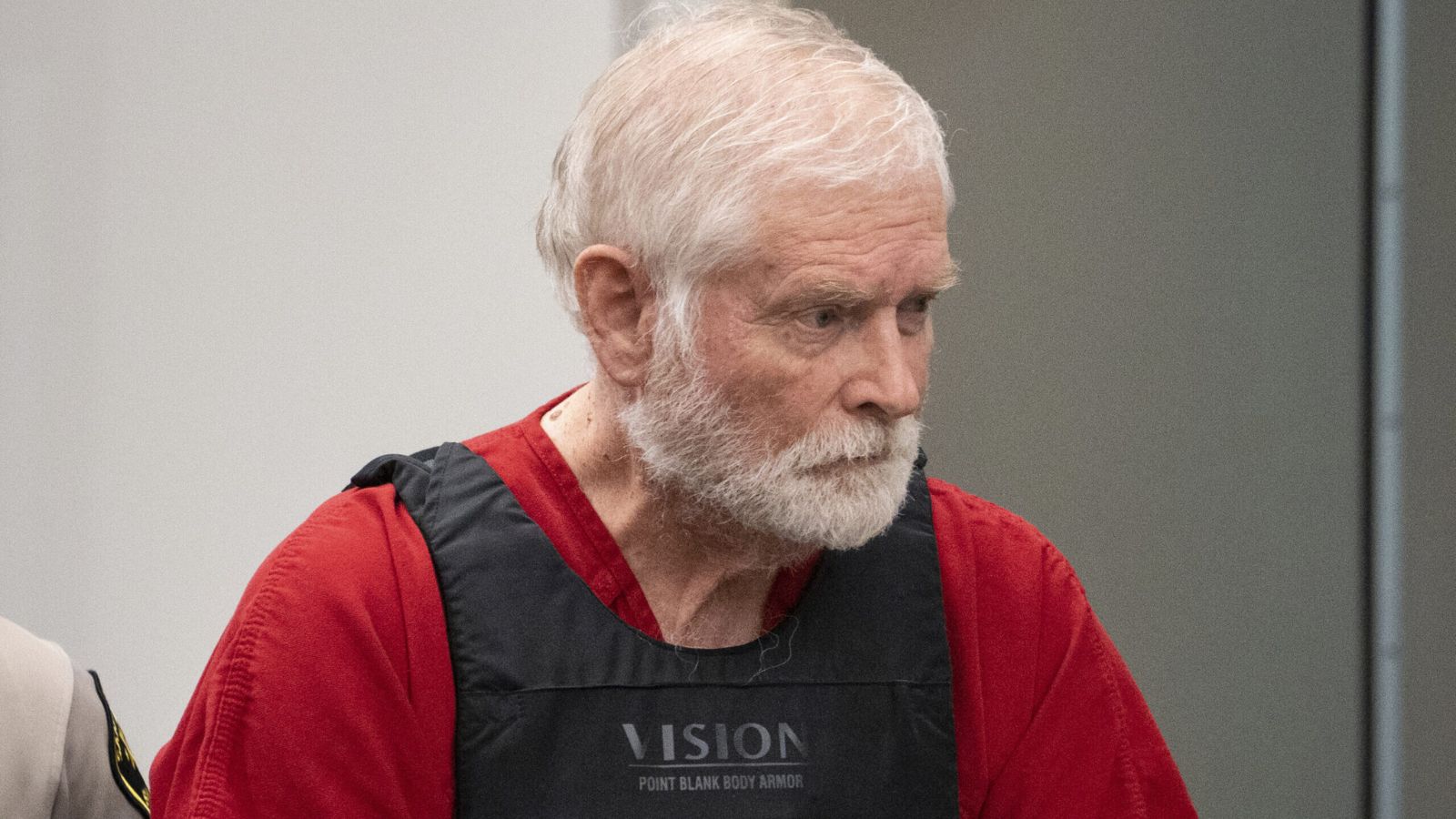Power outage time after Sandy not extraordinary
Nov 16, 2012, 8:19 AM
AP Energy Writer
NEW YORK (AP) – As the number of nights without power stretched on for thousands left in the dark after Superstorm Sandy, patience understandably turned to anger and outrage.
But an Associated Press analysis of outage times from other big hurricanes and tropical storms suggests that, on the whole, the response to Sandy by utility companies, especially in hardest-hit New York and New Jersey, was typical _ or even a little faster than elsewhere after other huge storms.
The AP, with the assistance of Ventyx, a software company that helps utilities manage their grids, used U.S. Energy Department data to determine how many days it took to restore 95 percent of the peak number of customers left without power after major hurricanes since 2004, including Ivan, Katrina, Rita, Wilma, Ike and Irene.
After Sandy, New York utilities restored power to at least 95 percent of customers 13 days after the peak number of outages was reported. New Jersey reached that same level in 11 days and West Virginia in 10 days.
Hurricanes Katrina, Rita and Wilma in 2005 and Ike in 2008 all resulted in longer outages for customers in Louisiana, Texas, Mississippi and Florida.
The longest stretch to 95 percent restoration since 2004 was Louisiana after Hurricane Katrina, where local utilities had power restored to only three-quarters of their customers after 23 days before Hurricane Rita hit and caused additional outages.
Rita left Texas customers in the dark for 16 days; Katrina knocked out power to Mississippi customers for 15 days; Wilma and Ike knocked Florida and Texas out for 14 days each before power was restored to 95 percent of those who lost it, according to the federal data.
New York and New Jersey recovered far faster after last year’s Hurricane Irene. It took seven days for New York to restore 95 percent of customers and six days for New Jersey. But the number of outages in each state was less than half than from Sandy.
The restoration target of 95 percent allowed the AP to compare responses to the largest number of recent storms using Energy Department data, and is considered by industry experts to provide a meaningful picture of the speed with which utilities restored service to the vast majority of customers.
A week or two without power is, without question, a difficult and frustrating hardship. There’s the spoiled food in the fridge and the dark nights. There’s the fire danger from relying on candles. No electricity also can mean no heat. In tall apartment buildings, it means no elevator service, a serious problem for the infirm or elderly who can’t navigate stairs. For those who rely on mobile phones for communication, it means no way to charge phones _ and therefore no way to communicate with loved ones or emergency services.
Michael Redpath of Toms River, N.J. was without power for 15 days before getting it back this week. He and his wife stayed in their home for the first week after Sandy because their friends also had lost power. As some power in the region was restored, and Redpath’s wife got sick from too many nights in the cold, they started staying over with friends.
“It’s just so disorienting to be without power, to be out of your house and to not know what’s going on,” he says.
Determining the quality of a utility’s restoration efforts after an outage is difficult to do, experts say. That’s because every storm generates a unique cocktail of mayhem that differs from location to location.
Just because New York and New Jersey utilities restored power in a range that is normal by historical standards does not prove that all of the utilities in the region performed equally well, or that they performed better or worse than their peers responding to outages in other states, or that there isn’t plenty of room for improvement.
Frustrated residents, business owners and state and local officials lashed out at their electric utilities. Gov. Andrew Cuomo of New York formed a commission to investigate the responses of utilities in his state, and the operations chief of one utility, the Long Island Power Authority, resigned.
Cuomo called LIPA “beyond repair” and also expressed frustration with the performance of Consolidated Edison, the electric utility for New York City and Westchester County to the north.
Also, a positive general performance doesn’t create any goodwill for those still suffering.
Sam Kusack, who owns an architectural metal fabrication shop in Red Hook, Brooklyn, was still without power Thursday, 17 days after going dark. Red Hook is in an isolated section of Brooklyn, and Con Edison only began laying new underground wires near his shop this week.
Workers told him power would be back by Friday, but, Kusack said, the utility had called him several times in the early days of the crisis to say his power would soon be restored. Those calls stopped long ago, and Kusack has continued to rely on a generator that gobbles expensive diesel fuel.
“It was a big storm, but it’s been a while,” he said. “It’s tough to run a company on a generator, with no power. I have 25 employees, and a payroll to meet.”
The fact that it has taken utilities roughly the same amount of time to restore the vast majority of customers as after similar-sized storms suggests that restoring power after an enormous weather event is simply a long, difficult process.
“The work is no magic, it’s hard, grueling work,” says Arshad Mansoor of the Electric Power Research Institute, an industry-funded technology research group.
Sandy’s most prominent feature was its enormous footprint and record number of outages. All told, Sandy caused 8.5 million power outages across 21 states, the highest outage total ever.
The Edison Electric Institute, an industry group, estimates 67,000 workers from utilities and other firms in several states worked to restore power, but they faced a huge volume of work. For example, New Jersey’s biggest utility, Public Service Electric & Gas, had to cut down 41,000 trees, replace 2,500 poles and install 1,000 new transformers. At its peak, 77 percent of PSE&G’S 2.2 million customers lost power.
Sandy also dumped 2-to-3 feet of snow in West Virginia, knocking power out to a quarter of that state’s customers. And efforts to restore power along coastal properties were complicated by a storm surge that flooded dozens of substations on Long Island, in New York City and in New Jersey. For example, a storm surge and subsequent explosion at a substation on the East Side of Manhattan plunged the lower third of that borough into darkness.
Equipment in all of those substations had to be cleaned or replaced before the substations could be re-energized. Only then could utilities see if the lines between each substation and the thousands of customers each one serves also had to be repaired.
Utilities first fix problems that affect the largest number of customers, then work their way down to smaller problems affecting handfuls of customers. With Sandy and other big storms there are also thousands of customers who cannot get power because their homes are damaged and it is not possible or safe for the utility to restore power.
This restoration approach is reasonable, experts say, but it leads to intense frustration when those last few in the dark see their neighbors back to normal. Customers are generally understanding for two days without power, utility officials say. Then they are not.
Those last few homes and businesses, such as Kusack’s firm, are often the hardest to restore; on many occasions, the days turn into weeks. After Con Edison restored power to nearly all of its customers 10 days after the storm, it said it was facing 3,600 restoration jobs in Westchester County that involved 11 or fewer customers each. LIPA said midday Thursday that 2,942 customers were still without power, not including those in flooded areas who cannot receive power until their own equipment is repaired and certified.
This is all part of a utility’s job, of course. Delivering power reliably is the single most important task for an electric utility. Without question, some do a better job of planning, managing logistics and communication with customers and local officials than others.
“Not every utility is the same, not every utility is in the same state of readiness,” says David Wright, president of the National Association of Regulatory Utility Commissioners.
EPRI’s Mansoor said one indication that planning in the region affected by Sandy was good is that utilities did not run low on workers, poles, transformers, or other supplies. “Crews were available, spare parts were available,” he said. “That was not an issue in this recovery.”
New Jersey Gov. Chris Christie has defended the response of the utilities in his state, and perhaps for good reason. Sixty-five percent of New Jersey utility customers lost power, 2.6 million homes and businesses. Compared with other big storms, New Jersey’s utilities restored power to most customers in the shortest amount of time for a state with such a high percentage of outages.
A common complaint from residents throughout the region: The lack of accurate communication about when power would be restored.
Redpath, who is served by Jersey Central Power & Light, said he understands that the restoration job was enormous and would have understood if it took utilities three or four weeks to restore power. But for an entire week he was told almost daily that power would be restored the next day. He said he just happened to discover the power had finally been restored when he noticed the lights were on his neighbor’s porch while driving by.
“I think (JCP&L) did a phenomenal job of marshaling resources, and the people on the ground did a phenomenal job,” he said. “The problem was a combination of misinformation and no information. We would have managed differently if we knew what to expect.”
___
Follow Jonathan Fahey on Twitter at
http://twitter.com/JonathanFahey.
(Copyright 2012 The Associated Press. All rights reserved. This material may not be published, broadcast, rewritten or redistributed.)





